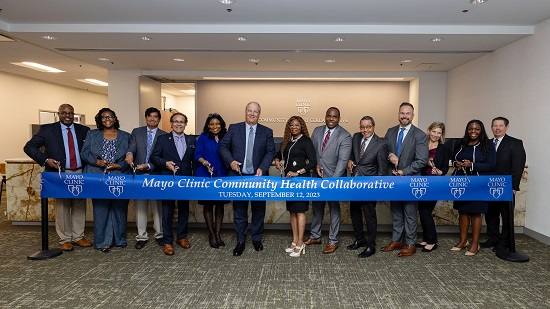News Releases

September 12, 2023
JACKSONVILLE, Fla. ― Mayo Clinic in Florida has opened its Community Health Collaborative in downtown Jacksonville. The office aims to understand the healthcare needs of[...]
May 30, 2012
May 24, 2012
May 23, 2012
Explore more topics
 Sign up
Sign up

Mayo Clinic Connect
An online patient support community
